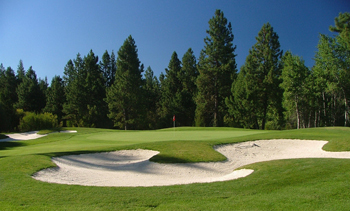
Having designed thousands of bunkers inmore than 20 years as a golf course architect, Pascuzzo believes their primary purpose is to serve as hazards, though they also provide visual balance and composition. Pascuzzo describes them as “the yin to the yang of the fairway.”
When placing bunkers, Pascuzzo thinks about strategy, rather than solely focusing on bunkers’ penalizing purpose. “I will tempt golfers by placing a bunker in a location where they may think they can carry it, and if they strike a good shot they can,” he says. He compares this “temptation” to dangling a carrot in front of golfers.
Pascuzzo likes to experiment with different shapes, especially puzzle-piece“cape and bay” shapes, but he rarely designs bunkers more than hip deep. In terms of sand preference, Pascuzzo often opts for a local sand with good playing characteristics.

In 2006, Memorial Tournament host Jack Nicklaus, ASGCA initiated the use of rakes with thick tines, which resulted in furrowed bunkers. Some complained because their ability to spin the ball was compromised. Pascuzzo applauded this idea, however, as it restored bunkers to hazards and helped identify the game’s best players by penalizing them for hitting the ball into these hazards.
Pascuzzo says today he’s doing more work with bunker and maintenance reduction. Bunkers with natural, as opposed to hard, edges are less expensive to maintain, and bunkers shaped conservatively are also more cost-effective because they can be raked mechanically. According to Pascuzzo, courses are asking him “to eliminate bunkers that are not strategically necessary and make the ones they keep less labor intensive.”
For more of Pascuzzo’s thoughts on bunkers, read the entire article here. For more information on bunker design and maintenance, please contact ASGCA.
